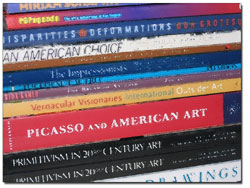|
| ||
| For the sake of art
by Jules Masterjohn A mentor and fine artist once confessed to me, “The artist needs to make art more than society needs the artist.” Then in my early twenties, I did not want to believe that my life’s vocation might not hold the same meaning for the public as it did for me and every other emerging artist I knew. Her revelation, however, has become my compass and motivated me to look carefully for evidence of this inequitable relationship between artist and the world. As I discovered validity in her truth, I also found its contradiction: art and creativity have changed lives and communities, showing that the world does need art, though it might need to be directed to art’s transformative power. Many seminars in graduate school reinforced the importance of cultivating the audience and developing the ability to articulate one’s artistic intentions for the purpose of sharing with the public. Many years of working with artists and as an educator have shown me the need for and possibilities in making artists’ creative processes accessible to the curious public. It has become clear that without drawing in and educating a broad and diverse community, visual artists fall prey to cliquishness and the vocation can be seen as elitist, removed from and irrelevant to most people’s lives. During a gathering last week, nearly 80 visual artists and advocates met with the Durango Arts Center’s board of directors to offer their ideas for a DAC that better serves visual artists. The purpose of the meeting was to compose and present a “wish list” to the organization’s board. The suggestions were reasonable, attainable and pragmatic, addressing issues of artists’ visibility through an artist registry, support for emerging artists, and attracting collectors for artists’ work, as well as to provide services that directly assist artists in professional development classes and affordable studio space. Many of these have been implemented at the DAC in the past. At least one person addressed the desire to make art accessible to nonartists through art appreciation classes. Hers was the lone voice in recognizing the need for cultivating an audience. It’s understandable that the meeting took the path it did. Through the momentum of past decisions by the organization, the visual arts have withered and the trust with the artists has been broken. The question for many is, can the DAC be relied on to sincerely support the visual arts again and does it have the capacity to do so? Even without the significant financial indebtedness of the organization and the absence of visual arts leadership on staff, there is concern that the complexion and balance of the board does not, in earnest, understand the visual arts, artists’ needs, or the role of arts in our culture. Perhaps visual artists do not have agreement about these issues either? Why should artists support an organization that is not serving their needs? Why should a community support an arts center that is not serving its needs? How can an organization that is not supported by the community survive? As long as the constituents of the DAC cannot come together in honest, open, though perhaps difficult, dialogue, the most important work will not be accomplished. Without this broad concern for the greater good, the organization runs the risk of serving personal agendas and special interests. Let us hope that the DAC does not become an art country club or an art clubhouse ... neither of which is in creativity’s best interest. This community has a monumental task at hand – to recover, sustain and nourish an arts organization that has defined the cultural landscape of our region during its 35-plus year history. How can those involved be expected to fully grasp and wisely navigate the situation rife with complexity and diversity of needs? Artists are young and old, emerging and established, contemporary and traditional, and educated and self-taught. Some make art for love, others make art for money; some create to confront and others to soothe. Artists use the same visual vocabulary of line, color and shape to give form to disturbing realities as they do to depict simple beauty. The role of a community arts center is to bring artists and the public together in an inspiring and intelligent interaction that benefits the artists, the community, the arts center, and the future of art. The arts center not only serves the arts community but the sizeable undeveloped audience that is curious yet uncertain about the visual arts. Of course, given the long list of artistic motivations for creating, a public is rightfully confused and perhaps intimidated about art. How do we invite and embrace those who are curious yet uninitiated? How do we meet viewers in their aesthetic comfort zones, embrace them, and coax them a bit farther down the road? Visual artists need to be thoughtful about their audience and develop the tools to advocate for themselves and their art. Artists and the arts center share the task of bringing the visual arts to a broader audience. Examining, questioning, and coming to terms with art can be a metaphor for living with awareness. When we look at art in this way, we practice being fully alive. •
|
In this week's issue...
- May 15, 2025
- End of the trail
Despite tariff pause, Colorado bike company can’t hang on through supply chain chaos
- May 8, 2025
- Shared pain
Dismal trend highlights need to cut usage in Upper Basin, too
- April 24, 2025
- A tale of two bills
Nuclear gets all the hype, but optimizing infrastructure will have bigger impact


